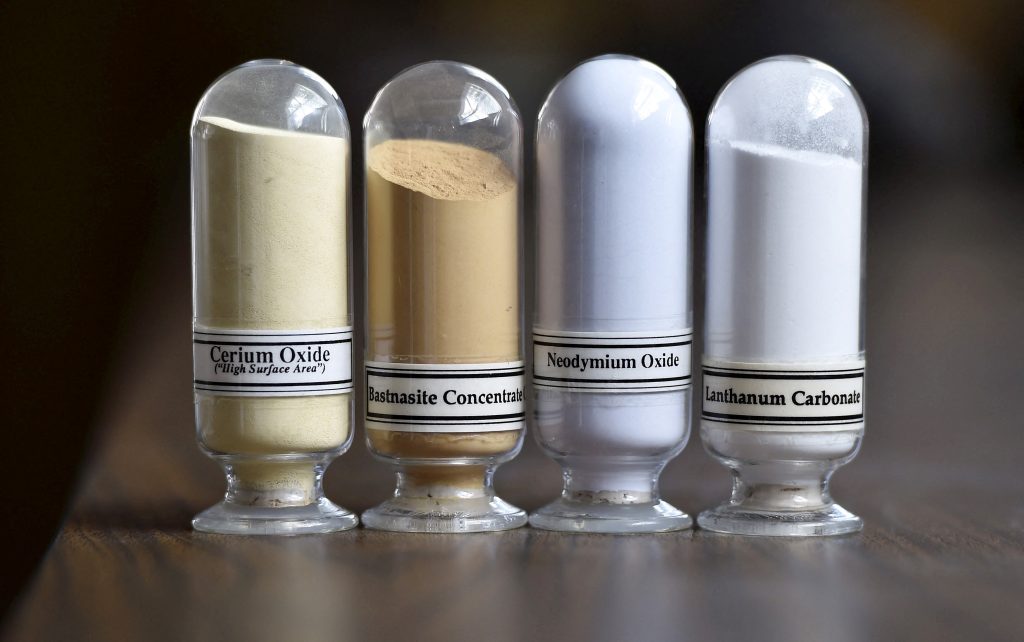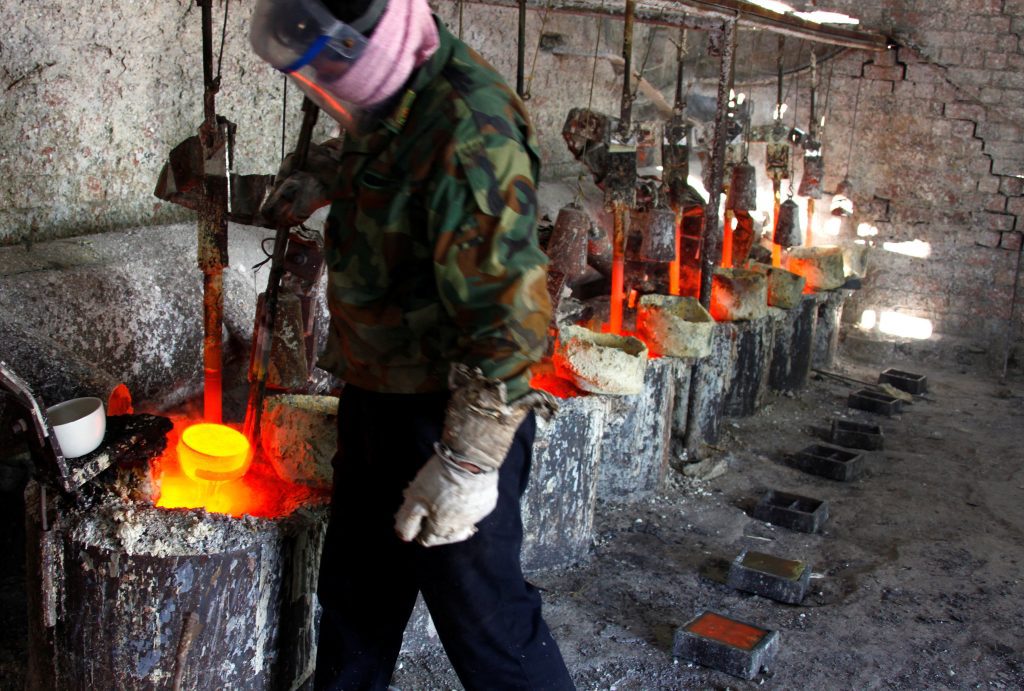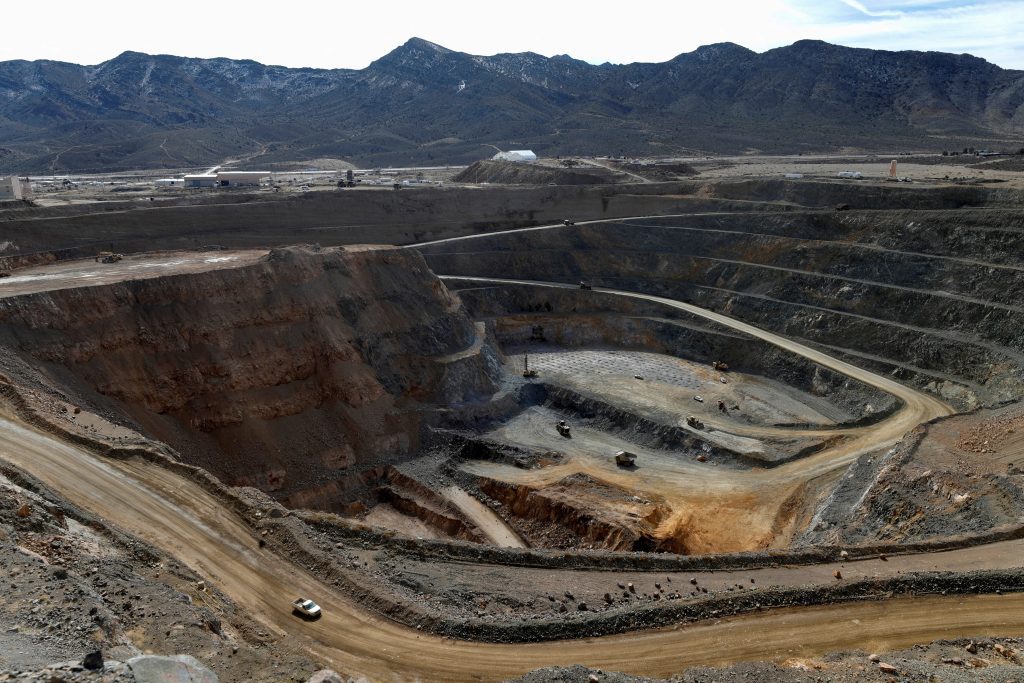
The U.S. Department of Defense plans to develop an AI-based program to estimate prices and predict supplies of nickel, cobalt and other critical minerals, a move aimed at boosting market transparency but one that throws a new, uncertain variable into global metals markets.
The AI-based program, which received little attention after it was announced on a Pentagon website in October, is part of Washington’s broader efforts to jumpstart U.S. production of critical minerals used in weapons manufacturing and the energy transition.
U.S. output lags market leader China partly because attempts to build new American mines can be heavily influenced by commodity price swings. Jervois Global, for example, announced last year it would suspend construction of an Idaho cobalt project due in part to low market prices, even while Chinese cobalt miners – financially backed by Beijing – said they would boost production of the battery metal in a bid for greater market share.
An official rubric by which Washington estimates how much a specific metal should cost, though, could confuse metals markets by creating dueling structures for determining price, according to two sources who were not authorized to speak publicly.
Traditionally, metals prices are set by futures markets and pricing agencies and reflect what buyers are willing to pay and sellers are willing to accept using supply, demand and other factors.
The Pentagon’s work is being run by its Defense Advanced Research Projects Agency (DARPA) division, which was formed in response to the Soviet Union’s 1957 launch of the Sputnik 1 satellite and helped develop the Internet and the mRNA vaccine for COVID-19.

DARPA and the U.S. Geological Survey plan to hire one or more private contractors to develop an artificial intelligence-backed model that would construct a metal’s “structural price” based on where and when it is produced, as well as labor, supply and other costs, according to documents seen by Reuters that describe the AI-based program, including a slide deck that DARPA presented last November to prospective contractors.
The DARPA AI-based program, known as Open Price Exploration for National Security (OPEN), is intended to boost price transparency for government agencies and commercial entities and offset the risk Washington believes futures markets and pricing agencies pose to national security, according to the documents.
The Pentagon believes commodity purchase transactions are negotiated using “opaque and flawed pricing data” that pose “substantial barriers to U.S. commercial competition,” according to the documents, which referenced both futures exchanges and commercial pricing providers.
In a statement to Reuters on Jan. 16, DARPA said its efforts aim to “remove market opacity that can engender supply chain disruptions” and that the data will be used by government agencies and commercial entities. “The OPEN program is fundamentally about transparency,” a DARPA spokesperson said.
The U.S. Geological Survey deferred comment to DARPA.
The Pentagon’s efforts are not intended to set an official U.S. government metals price or replace the London Metal Exchange (LME) and other futures markets, the sources said.
However, the documents cited the LME’s 2022 nickel pricing fiasco as one of the “endogenous market dynamics and anticompetitive practices [that] can make futures markets a poor source of price information.”

Financial information firm S&P Global and defense contractor Lockheed Martin are among the companies that have applied, according the sources. S&P Global, which publishes benchmark prices for metals and other commodities, did not respond to requests for comment. Lockheed Martin deferred comment to DARPA and the U.S. Geological Survey.
Bids were submitted in late November and a decision on the choice of one or more contractors could come as soon as this month, according to one of the sources.
The AI model will be rolled out in three phases over the course of two years, according to the documents.
OPEN also aims to predict how supply could be affected by unexpected market shocks such as labor strikes, although the contractors have been told not to predict natural disasters or other specific market events, the documents showed.
Market analysts typically estimate that roughly 5% of global production of a metal could be disrupted each year by such unexpected shocks.
‘REVOLUTIONIZE’ PRICING
As part of their presentation to prospective contractors last November, officials at DARPA’s Arlington, Virginia, headquarters described the AI-based program’s goal: “Revolutionize the construction and dissemination of price, supply, and demand predictions and forecasts in critical materials markets.”
Anticipating price swings and calculating what might be an appropriate value for a metal could give Pentagon officials a formula to time purchases for national stockpiles, one of the sources said.
The Pentagon this year, for example, plans to buy 1,300 metric tons of lanthanum, used in steel alloys, government records show. But lanthanum, one of the 17 rare earths, is not traded on futures exchanges and China’s control of the sector makes it difficult to determine whether prices offered reflect market fundamentals.
A 2021 spike in the price of coal caused a 200% jump in prices for magnesium that the Pentagon document said “further increased the opacity of the U.S. critical material supply chain.” Magnesium can be produced alongside coal and is used to make missiles and other weaponry.
It is not clear how a U.S. government metals price or supply estimate would be received by mining companies, their customers, and metals exchanges, all of whom have developed the existing market structure over hundreds of years.
Most metal is sold on long term contracts. Consumers, producers and traders often sell their unwanted metal on exchanges such as the LME, a market of last resort where prices are lower than in the physical market.
In the physical market, buyers typically pay a premium that takes into account costs such as those for transport, insurance and import taxes, above the LME price used as a reference.
Several lithium, rare earths, and graphite miners have begun charging premium prices for metals produced outside of China, but those terms are contractually negotiated and not influenced by any government price schema.
The LME said it expects the use of AI to analyze metals supply and demand to grow, but noted that its own prices are based “on real world transactions executed by market users across the globe.”
“The LME’s traded contracts are settled through the physical delivery of metals into our global warehouse network, ensuring LME prices fully reflect any shifts in physical market fundamentals,” a LME spokesperson said in response to questions from Reuters.
Any concerns that a U.S. government “structural price” for a metal could conflict with futures exchanges and pricing providers is “beyond the scope” of OPEN’s aims, a DARPA spokesperson said.
The White House referred requests for comment to DARPA. The U.S. Treasury Department did not respond to requests for comment.
Inside Telecom provides you with an extensive list of content covering all aspects of the tech industry. Keep an eye on our News sections to stay informed and up-to-date with our daily articles.